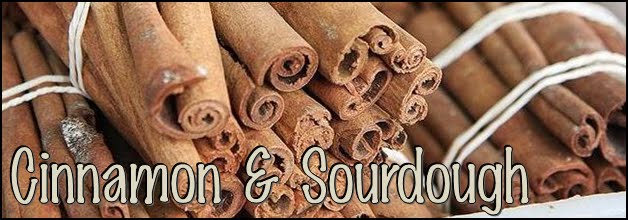I love making bread. It sounds dumb, but I find it very therapeutic. A lot of people find it a little intimidating, what with all the yeast and rising times and working with dough and whatnot. I promise, it's not hard! Especially this recipe. It doesn't have insanely long rising times (like a lot of bread recipes do) and it's pretty easy to work with. And nothing is better than the smell of freshly baked bread.
I'm really not sure how I ended up with the shape loaf that's shown in these pictures. It was the first loaf I made using this recipe and all subsequent loaves have turned out much fatter (like the pictures on Fake Ginger's site - and by the way, I love Amanda's site. Such great recipes! Definitely take a look!) Maybe I didn't let it rise enough? Who knows. I'll have to try and replicate it sometime because it's prettier (but the other way gives you more bread!)
The original recipe makes 2 very large loaves of bread so I've scaled it down to 1 loaf here. Much easier to manage!

I did not get a picture of this (or any loaf from this recipe) before it was cut into. Impatient boys.
The Easiest French Bread Ever
adapted from Fake Ginger
Makes 1 large loaf
Ingredients
1/4 cup warm water*
1 teaspoons yeast**
1 cup hot water
1.5 tablespoon sugar
1.5 teaspoon salt
2.5 tablespoons shortening
3 cup flour
Directions
1. Combine the 1/4 cup warm water and 1 teaspoons yeast in small bowl. Let sit for 5 minutes while you get together the other ingredients.
2. Mix the 1 cup hot water, sugar, salt, shortening***, and half (1.5 cup) the flour in the bowl of a stand mixer (if you have it, large bowl will work just fine if you don't). Add the yeast/water mixture and mix to combine. Add the rest of the flour (1.5 cup) and mix to combine.
3. Leaving the spoon (or beaters) in the dough, cover the bowl as best you can with a kitchen towel and let sit for 10 minutes. After the 10 minutes is up, stir down dough. Repeat these steps another 4 times.
4. Roll the dough out on a floured surface into a long rectangular shape. Using a serrated knife, cut diagonally across the surface of the dough (only about 1/4 of an inch deep) 3-4 times down the loaf (see picture). Allow the dough to rise in a warm place, covered with a kitchen towel, until doubled in size - about 30-45 minutes.
5. Preheat oven to 400 degrees. Bake the loaf on a cookie sheet covered in aluminum foil for 35 minutes. Allow to fully cool before cutting into the bread.
*I don't use a thermometer so I can't give you a temperature so you'll have to do with vague directions here. It needs to be warm to the touch but not hot. Too cold and the water won't wake up the yeast. Too hot and the water will kill the yeast. It really isn't as confusing as it sounds, you have a fairly wide range.
**If you think you may make bread often, it's a good idea to buy the yeast in the small jar and keep it in your fridge. It's much easier to just measure what you want from a jar than to try and use the tiny packets.
***The best way to add the shortening is to tear it into small pieces with your hand and just dropping it into the mixture. Shortening really isn't something you'll likely use often but it's worth it to buy it, even just for this recipe. It keeps forever and it relatively inexpensive. Keep opened sticks in a ziplock bag in the fridge and unopened sticks in your pantry.



No comments:
Post a Comment